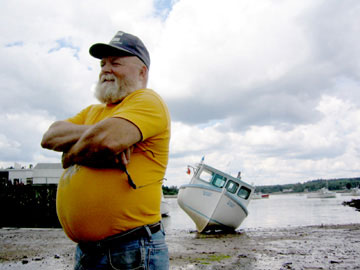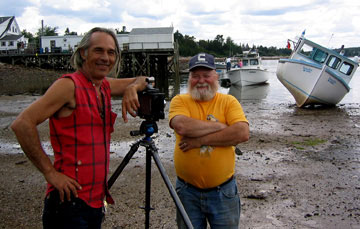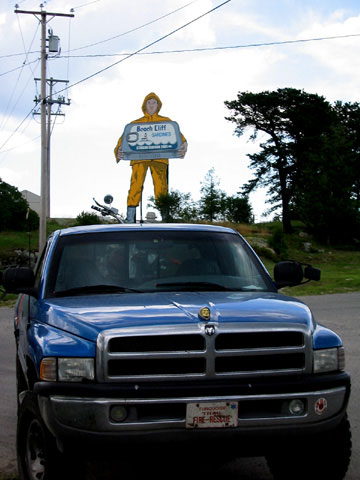Patton Pond RV Resort
Photographed William Coombs today in Prospect Harbor, Maine while he was waiting for the tide to come in and his boat to rise. That’s his boat, The Narda Jean, behind him in the photograph below. William is a lobster fisherman and has been most of his life. He spent about 10 years up in the woods working but other than that his life has been here, on the sea, catching lobster. I spent about an hour talking and photographing. The great thing about this trip is meeting and talking with folks like Bill. It still amazes me how willing folks are to stop what they are doing and be photographed, without even asking why. No one has ever said no or even asked why I want to they just seem to feel it’s a good thing to do and for that I’m so grateful. As I set up and begin to make the image I do tell them a bit about myself and the trip and that I will send them a print but they give themselves freely before that.
Lobster Fishing facts:
1. You work 2 years as an apprentice to a local fisherman, in the area you plan to fish, learning the area, tides, bottom and getting to know the local folks. Then you can get a license.
2. The federal license is good from the Canadian boarder down through Massachusetts and allows you to fish anywhere.
3. Local tradition has much more to do with where you can fish than does the federal license. And if the locals don’t like you, you don’t fish there. A knife stuck in a buoy is your first warning that you’ve encroached on someone’s territory.
4. Female lobsters with eggs are marked with a “V” in their tail and released. You have to release them but don’t have to mark them. Once marked they can never be kept by a fisherman when caught, so it insures a good supply of females who remain breading stock, if the fishermen mark them. The more that are marked the greater the chance that the lobster population will stay healthy. This limits the immediate supply as you may catch the same female again minus her eggs that same season but looking long term you want to mark many.
5. The last few years a good day was 400 to 500 lbs. a day. This year it’s been about 50 lbs per day.
6. Lobsters, like crawfish do bury up in the mud and lay dormant.
7. Lobsters do molt up to 20 times before they reach 1 ¼ lbs. There old hard shells molt away and underneath is a new very soft shell that takes awhile to get hard again.
8. New Shells have less meat but taste sweater. When you break open a new shell claw you are surprised to find it only about half full of meat, but you can break it apart with your hands and eating one is very easy work.
9. This being america, it seems the hard (old shells) are in more demand. Quantity over quality apparently!

William Cooms

DMK and William Coombs

In Honor of John Rudiak

